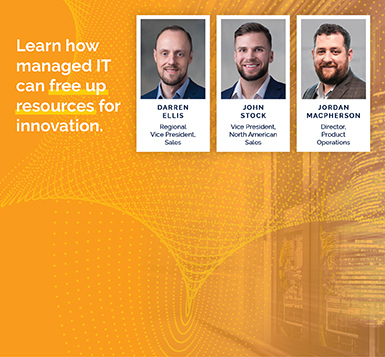The Benefits of AIOps
Park Place Hardware Maintenance
Machine learning loves data—the more the better.
It’s not news to data center managers that the environments they are charged with building and maintaining are more complex than ever. Budgets dictate that emerging technologies are often layered atop legacy ones. Moreover, the now mainstream use of cloud and the emerging impacts of IoT and edge technologies, as exciting as they are, make life on the front lines of IT operations difficult.
Fortunately, new tools are arriving just in time to save data center teams as manual oversight and adjustments of IT systems can no longer keep up.
Artificial Intelligence—or at Least Machine Learning
AIOps to the rescue! The term was originally coined as an acronym for “algorithmic IT operations” and then more recently changed to the catchier “artificial intelligence for IT operations.” We’ve discussed before the fuzzy distinction between machine learning and true artificial intelligence. However you define them, AIOps stands on the well established side of the fence, with proven applications of machine learning algorithms, in this case to enhance IT operations.
Machine learning loves data—the more the better. As the modern data center has outstripped humans’ abilities to keep watch on the variety of monitoring systems and to separate signal from noise within a bewildering array of near-constant alerts, machine learning-backed AIOps solutions benefit from the sheer volume of information now available about IT environments. Fed more and more scenarios throughout the training process and later in production, machine learning systems become increasingly adept at “understanding” what the environment “looks like” when operating at peak performance and what signs emerge when problems are on the way.
The most rudimentary AIOps system aggregate monitoring data and provide better visualization, from which backward-looking decisions can be made. More sophisticated solutions, however, provide real-time and even predictive information. The power of such a forward stance cannot be overstated. Being able to intervene before small problems become huge headaches can be the difference between hitting five- and six-nines uptime and disappointing customers with outages and performance issues.
The Importance of Automation
Understanding the environment is great, but being able to act quickly and effectively is equally challenging. That’s why Gartner considers automation a key component of AIOps systems. These solutions can take over administrative tasks and, as they advance in technical capabilities, actively fix problems.
A simple example is storage management, where AIOPs systems could detect that a disk is reaching full capacity and direct incoming data to other arrays, all without administrators needing to manually make the change. In the software-defined data center (SDDC), the opportunities for remote and hands-off fixes are burgeoning.
Benefits in Brief
What does all this mean for data center managers who use AIOps? Here are some of the prime advantages:
- Enhanced visibility over the IT environment. AIOps is helping data center managers move closer to that single pane of glass we’ve all been hearing about.
- Reduction in false alarms. As mentioned above, AIOps systems can take a wealth of historical situations into account to help separate signal from noise, determining when action is really needed.
- Greater predictive capabilities. The dream of anyone in maintenance is to get beyond reacting to problems as they arise. Scheduled maintenance was one step forward, but actually predicting the majority faults before they happen is the nirvana we’re fast approaching.
- Better prioritization of urgent, high-impact issues. As AIOps has developed, solutions are helping to point to mission critical issues. Imagine a scenario where there’s a glaring fault—a failed drive, for example—on a little-used archival system at the same time there is an emerging problem with a key application server. AIOps can help direct teams’ attention to the latter, where rapid action could prevent costly downtime.
- Improved root cause analysis. Machine learning systems are also better at digging through an immense quantity of data to home in on the source of a particular issue, so administrators don’t need to go on a wide troubleshooting hunt.
- More effective interventions. When data center leaders know about problems sooner and understand the source right away, they can resolve issues the first time.
- Reduced burden on internal staff. The increased automation and the improved problem-identification and prioritization capabilities of AIOps promise to maximize the impact of internal staff. With the IT talent shortage on, this is critical—and it can save money, too.
It’s always been our mission to help simplify data center operations where we best can, making IT hardware maintenance less time-consuming and expensive. That’s why we were so interested in the potential of machine learning to transform data center operations and why we’ve made it accessible with ParkView, our proactive monitoring system.
Visit that link above to get an overview of what ParkView can do and then consider asking for a quote to find out just how little it would cost to take advantage of a complete IT hardware maintenance solution with proactive monitoring included. You might find a way into AIOps faster than you had expected!



